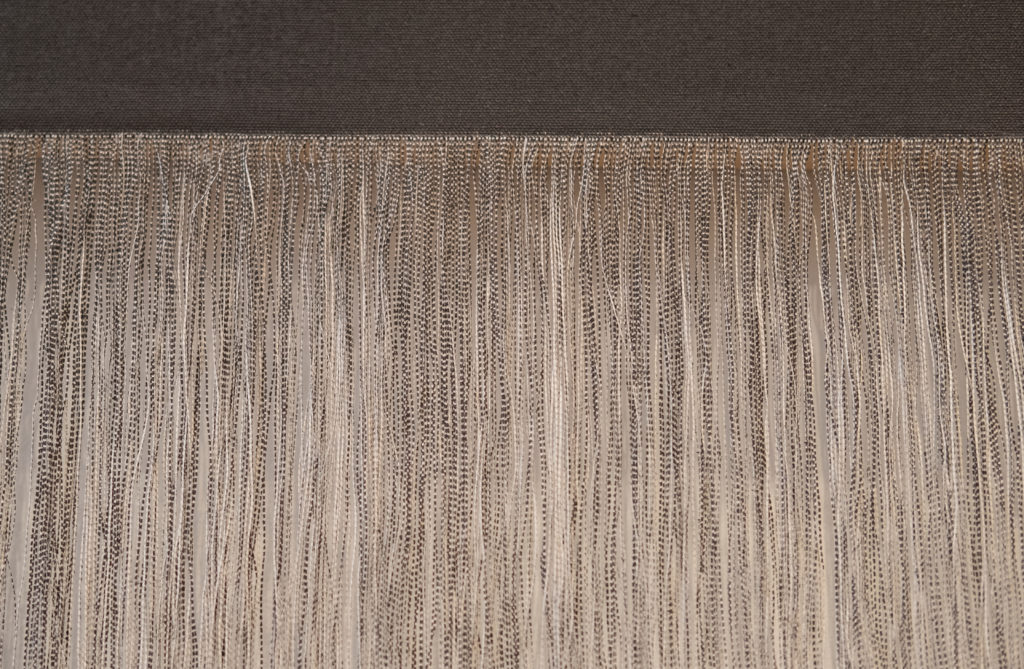
Interview with exhibiting artist Ko Kirk Yamahira
Micaela Green, BIMA’s Membership and Museum Events Associate, got the opportunity to chat with exhibiting artist Ko Kirk Yamahira recently to hear more about him and his fascinating work featured in BIMA’s current exhibition Fiber 2020.
Ko Kirk’s work is a unique approach to minimalism through deconstruction– he painstakingly unweaves threads of lightly painted canvas until he has transformed the surface into a draping, dimensional form. Check out the full interview below!
Could you please introduce yourself to our audience?
My name is Ko Kirk Yamahira, and I’m a painter who lives in Seattle. What I’m showing in Fiber 2020 is work I’ve made specifically for the show. With fiber spun from the past into the present, grasping cultural, technical and artistic aspects from a range of different viewpoints, with a multitude of points that connect to form lines, I imagined the ways they would interweave to form a plane along with the range of work being shown in the exhibition as I made the work.
I’m very happy to have the opportunity to take part in such a fascinating exhibition.
What do you want people to know about your work?
I would hope they might get a sense of intersecting movement between the two-dimensional and the three-dimensional.
You’ve lived in a variety of places– has that influenced your work?
I think it has. I mean that objectively. And at the same time, I mean it subjectively too. I feel like, for instance, there could be some pretty subtle factors involved with that. Like, for example, the floaty sensation that seems to encompass you the moment you take a seat on a comfortable stool of aromatic wood.
Deconstruction is a key piece of your process, how did you arrive at that? What does it mean to you?
I think it’s close to being something like a perspective on approaches to grasping or considering things. It links to a process where points connect to form lines, lines form planes and take on three dimensions; the three-dimensional form becomes a point once more, the points connect to form lines… It’s like, everything is connected, and it’s a matter of whether you take a subjective, objective, or relative approach in your view.
How do you know when a piece is finished?
Partly it’s just getting a sense of it, but it can also involve physical limitations, like running out of threads to unweave.
Who are some artists that you admire?
There are many, including some from mediums other than painting.
Describe a perfect day for you.
I’d hope to be able to say any day.
Where is the best place you’ve ever been?
There are still so many places I haven’t been yet, it’s hard to say, but it would be hard to choose even from among the places I am currently familiar with.
As an established artist, why is it important for members to support arts organizations such as BIMA?
I feel that there is something associated with the continued interaction between the many different people involved, with the links that form between people.
To bring up what the meaning is might lead to the expectation of a concrete answer, but I’ve dared to think of it as something. Answers are forever fluid.
But that could maybe be seen as stemming from the fact that we ourselves are fluid. And I’ll add that by something, I mean something really charming.
See more from Ko Kirk Yamahira at their website and on Instagram.
Published
Share
Ko Kirk Yamahira's work in Fiber 2020



